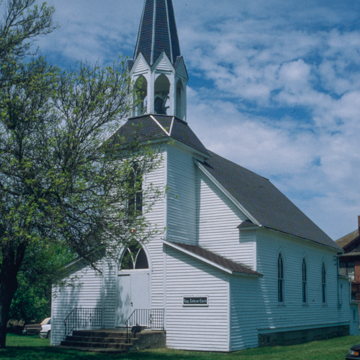This simple wood-framed Gothic Revival church is typical of Protestant churches throughout the rural Great Plains. The church has narrow lap siding, lancet windows, and a polygonal apse. A sixty-foot-tall bell tower and spire highlight the gabled entrance. As early as 1915, the Sunday school was divided into two classes to accommodate English and Norwegian, and until 1918 virtually all of the services were conducted in Norwegian. Through cultural assimilation, Norwegian services dwindled, but the first English-written meeting minutes and treasurer’s record were not until 1947. Initially, seating was divided by gender, a pattern that continued until the 1940s, when the younger members chose to sit together as couples.
The name Vang originates from Norwegian, referring to a field, grassy spot, or meadow. Many people from Vang Township in Norway immigrated to Goodhue County, Minnesota, in the 1880s, where they established a church named for their homeland. They carried the memory of Vang with them next to Manfred, and then a group of the Norwegian Americans relocated to establish Vang Lutheran Church in Millet, Alberta.











